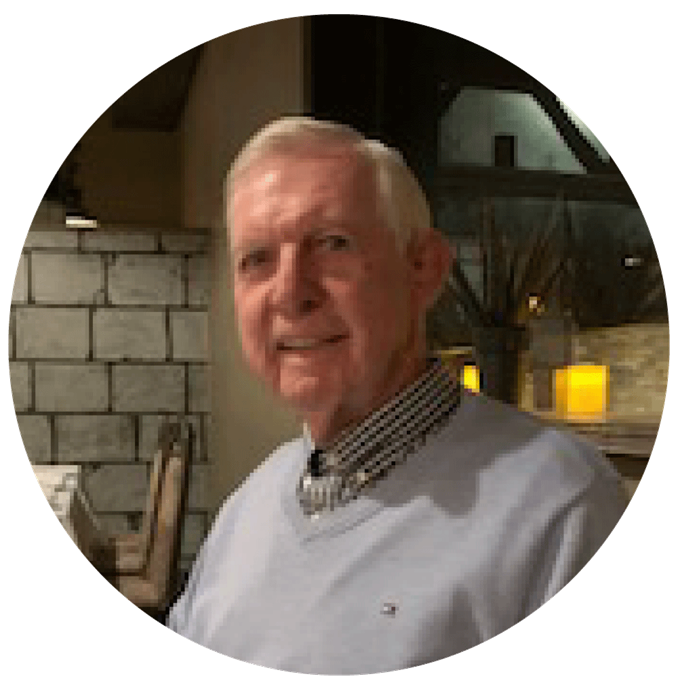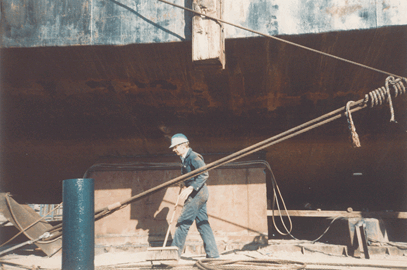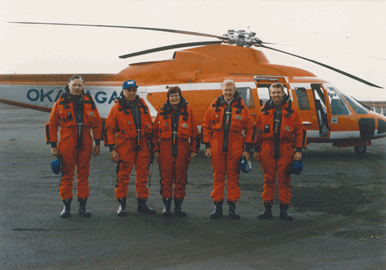
Last docking for Green Marine's very first verifier
Anchors aweighHugh Hutton calls it a day after 14 years of providing his expertise
Green Marine’s first-ever verifier is retiring from the role after providing the service to various participants over the past 14 years.
“I am so proud to have been involved,” Hutton says. “It’s been such a treat to work with David Bolduc and the rest of the Green Marine team.”
Hutton was impressed from the outset with the environmental certification program’s framework and straightforward criteria. “The program complements existing safety codes and ISO certifications in a way that encourages maritime companies to really examine how they can improve their sustainability,” he says.
Already conducting audits for Lloyd’s Register Quality Assurance for many years, Hutton approached Green Marine about being a verifier.
David Bolduc, Green Marine’s president, recalls the fortuitous timing. “We were just starting to look at how the program’s verifications should be carried out when Hugh contacted us with his extensive auditing experience in the maritime industry,” Bolduc says.
Hugh really helped us to establish the rigour and transparency that we wanted in the verification process
“But he also contributed to install a profound bond of trust with participants in terms of working with rather than against them to substantiate their environmental self-assessments,” he adds.
To put the program’s initial participants at ease about the process, Green Marine asked Hutton to carry out several trial verifications so the participants would know what they could expect when the actual reviews were later done.
“It was important to make clear that this wasn’t an audit with Hugh able to ask to see anything and everything, because there were initially proprietary concerns that related to business competitiveness,” Bolduc explains. “However, it was – as it still is – essential for participants to be able to substantiate the performance levels reported.”
With a clear understanding of all the criteria, Hutton could explain when he thought something was amiss.

“That would result in a discussion that would at the end of the day result in either me understanding why that level was claimed or the participant revising it.”
Hutton says he learnt as much from the participants as perhaps they did from him during his time as a verifier.
I really have loved doing this work for Green Marine, because I have always had a passion for the maritime industry and the people in it

At 16, Hutton began his career as a mechanical engineering apprentice in shipyard and engine works for Alexander Stephen & Sons Ltd. in Glasgow, Scotland, in 1960.
Five years later, he became the seagoing chief engineer and superintendent for Harrisons (Clyde) Ltd., a company that managed two of Fednav’s vessels.
James Murray, a former director at Fednav, took note of Hutton’s expert thoroughness in looking after Fednav’s vessels on the voyages between the United Kingdom and Canada’s Eastern ports. “When a Fednav vessel wasn’t performing to standards on another chartered route, he would ask my company to send me to find out why,” Hutton adds.

Hutton has enjoyed a career that has taken him worldwide, often transporting European vehicles, but also general cargo in the days before containerization.
I remember the bales of wool from Australia stored in the hold and then on the deck to take back to England
A series of mergers led to Hutton being at Algoma Central Corporation for a few months prior to Lloyd’s Register approaching him to go to London, England, to familiarize himself with the new International Safety Management (ISM) Code.
“Canada embraced the ISM Code, and I ended up training people in the maritime industry at Lloyd’s offices near ports throughout Canada,” he says. While in London, he also qualified for other safety, occupational health and safety, cargo security and environmental standards, and began applying his expertise in each area as a Lloyd’s Register auditor or trainer.

Hutton is also proud to have been called upon by NATO to add his maritime expertise to advise on best transporting military equipment during the 1990s Balkan Crisis.
For Green Marine’s initial first few years, Hutton was the sole verifier. “There were fewer participants in those days, as well as performance indicators,” Hutton recalls. “It took about a day back then to do a verification, while as now, with the additional indicators, it takes a couple of days.”
As the organization grew, so did the need to travel, especially prior to online platforms. “We’d share photo images by email and talk on the phone when necessary as follow-ups, but nothing surpasses the required onsite visit,” Hutton says.
He remembers the early participants being off to a solid start, having already met the new ISM Code as well as International Standardization of Organization (ISO) criteria in some cases.
Everybody still wanted to get a Level 5, if possible, and it was my job to ensure that a participant had all the information to support meeting the necessary criteria
“And, of course, the criteria became more numerous and demanding as the program evolved.”
Hutton admired the program’s focus on continual improvement. “It truly complemented the ISM Code and ISO criteria,” he says.
Bolduc is grateful to Hutton for helping Green Marine to establishing the initial bar for Green Marine’s verifiers.
Hugh definitely helped us to understand what we wanted in a verifier in terms of related expertise but also people skill
The environmental certification program's president adds that he’ll always have a special place in Green Marine’s story.
___________________
READ MORE ON THIS TOPIC:
Green Marine’s verification process undergoes review and updates
